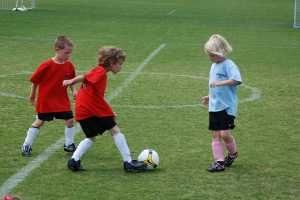Author Interviews, Exercise - Fitness, Weight Research / 14.02.2018
Fit Obese Patients Can Be Healthy
MedicalResearch.com Interview with:
 Jennifer L. Kuk, PhD
Associate Professor
York University
School of Kinesiology and Health Science
Sherman Health Science Research Centre
Toronto, Ontario
MedicalResearch.com: What is the background for this study? What are the main findings?
- The benefits of fitness are well know, but it was unclear whether the benefits applied to those with severe obesity. This is even more important give that the health risks associated with severe obesity are exponentially higher than in mild obesity. Fitness in this study was defined as the top 80% of a normal population.This means that unfit is the bottom 20%. In the past, research has shown that this threshold of fitness is associated with the biggest health benefits.
- We see that 40% of individuals with mild obesity are fit, while 11% of those with severe obesity are fit. Individuals with high fitness had no differences in health risk, despite the large differences in obesity (~50-100 pounds). Conversely, those within the unfit group did have significantly higher glucose, blood pressure and lipids with higher obesity levels.
In other words, fitness was able to protect individuals with severe obesity from many of the expected negative health consequences. (more…)
Jennifer L. Kuk, PhD
Associate Professor
York University
School of Kinesiology and Health Science
Sherman Health Science Research Centre
Toronto, Ontario
MedicalResearch.com: What is the background for this study? What are the main findings?
- The benefits of fitness are well know, but it was unclear whether the benefits applied to those with severe obesity. This is even more important give that the health risks associated with severe obesity are exponentially higher than in mild obesity. Fitness in this study was defined as the top 80% of a normal population.This means that unfit is the bottom 20%. In the past, research has shown that this threshold of fitness is associated with the biggest health benefits.
- We see that 40% of individuals with mild obesity are fit, while 11% of those with severe obesity are fit. Individuals with high fitness had no differences in health risk, despite the large differences in obesity (~50-100 pounds). Conversely, those within the unfit group did have significantly higher glucose, blood pressure and lipids with higher obesity levels.
In other words, fitness was able to protect individuals with severe obesity from many of the expected negative health consequences. (more…)
 Jennifer L. Kuk, PhD
Associate Professor
York University
School of Kinesiology and Health Science
Sherman Health Science Research Centre
Toronto, Ontario
MedicalResearch.com: What is the background for this study? What are the main findings?
- The benefits of fitness are well know, but it was unclear whether the benefits applied to those with severe obesity. This is even more important give that the health risks associated with severe obesity are exponentially higher than in mild obesity. Fitness in this study was defined as the top 80% of a normal population.This means that unfit is the bottom 20%. In the past, research has shown that this threshold of fitness is associated with the biggest health benefits.
- We see that 40% of individuals with mild obesity are fit, while 11% of those with severe obesity are fit. Individuals with high fitness had no differences in health risk, despite the large differences in obesity (~50-100 pounds). Conversely, those within the unfit group did have significantly higher glucose, blood pressure and lipids with higher obesity levels.
In other words, fitness was able to protect individuals with severe obesity from many of the expected negative health consequences. (more…)
Jennifer L. Kuk, PhD
Associate Professor
York University
School of Kinesiology and Health Science
Sherman Health Science Research Centre
Toronto, Ontario
MedicalResearch.com: What is the background for this study? What are the main findings?
- The benefits of fitness are well know, but it was unclear whether the benefits applied to those with severe obesity. This is even more important give that the health risks associated with severe obesity are exponentially higher than in mild obesity. Fitness in this study was defined as the top 80% of a normal population.This means that unfit is the bottom 20%. In the past, research has shown that this threshold of fitness is associated with the biggest health benefits.
- We see that 40% of individuals with mild obesity are fit, while 11% of those with severe obesity are fit. Individuals with high fitness had no differences in health risk, despite the large differences in obesity (~50-100 pounds). Conversely, those within the unfit group did have significantly higher glucose, blood pressure and lipids with higher obesity levels.
In other words, fitness was able to protect individuals with severe obesity from many of the expected negative health consequences. (more…)


